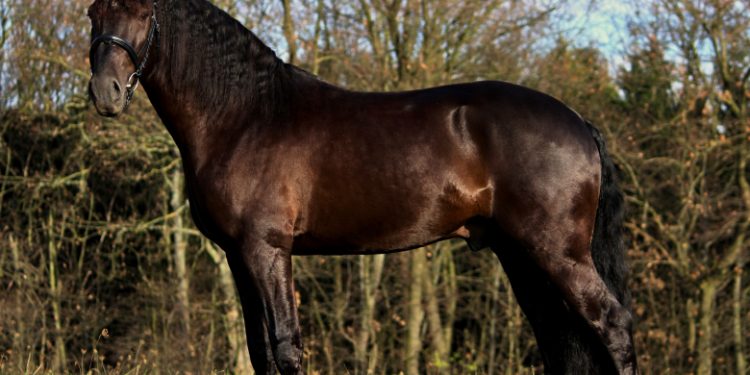Best known in the world of racing, the French Trotter is also very popular in other disciplines such as driving, hiking and show jumping. Of a courageous and kind nature, the French Trotter appeals to many riders who see a lot of potential in him. Originally from Normandy and more generally from the west of France, the French Trotter is one of the highest breeds of horses in the country. Discover everything you need to know about the French Trotter.
Breed History
Originally from France, the French Trotter is a direct descendant of the Anglo-Norman horse which was mainly used for driving.
Originally, the French Trotter was selected for use in the military and transport sectors. Breeders have sought to select horses that are both robust and able to travel long distances without becoming unduly tired. Norman horses were then crossed with English Thoroughbreds and Arabian Thoroughbreds, producing fast and lively, but calm foals.
Present in trotting races since 1836, the French Trotters are all descended from 5 great stallions, namely Conquérant, Lavater, Normand, Niger and Phaëton. They were first used in mounted trotting races before being used in harness racing after the First World War. In France, it was in 1873 that the French Trotter took part in the first races which were then held in the Bois de Boulogne.
Physical peculiarities
His head: the ears are large. The muzzle is straight, sometimes even hooked, and the forehead is wide.
Its neck: it is long and muscular.
His body: often compact, the French Trotter is slender and muscular. The back is short, the withers not very prominent and the sternum is prominent. The hindquarters and thighs are very powerful. The shoulder is angled, so he can have more range when in motion.
Its limbs: the Trotter’s legs are long, powerful and resistant. The hoof horn is often very hard.
Her dress: all dresses are allowed, although she is often chestnut or bay. On the other hand, the gray coat does not exist at Le Trotteur Français.
His gaits: they are ample. Galloping is very uncomfortable when the Trotter begins training.
Although French Trotters have common physical characteristics, there is actually no breed standard. It is often a robust and imposing horse.
Use
The main use that is made of the French Trotter is horse racing. About a third of French Trotter foals are destined for the racing world. However, not all Trotters have the physical qualities to run! Indeed, from the age of 2, all Trotters must pass selection tests to be qualified and take part in a race.
Those who are not fast enough will never take part in this activity. For a long time, these horses were simply sent to the slaughterhouse. And yet, they have many other qualities. With a little practice, it is quite possible to teach a Trotter to gallop, for example.
They are thus used in leisure riding or in equestrian tourism. French Trotters also make good show jumping, eventing and hunting horses. His calm side makes the French Trotter an excellent club horse, but also for TREC and trail riding. He has all the qualities to be a very good competition horse.
He can also be used in dressage, but due to an often precarious balance and an unnatural gallop for him, it is not his favorite discipline.
Attention ! The French Trotter is not a sport horse, but a race horse. This distinction is important since he does not have the possibility of being engaged in certain equestrian competitions.
Famous French Trotter horses
Many French Trotters have written their names in history! Among them is the famous Ourasi, the only one of his breed to have won the Prix d’Amérique 4 times. Une de Mai also made headlines by winning 74 prizes in the 1970s. Other renowned horses such as Roquépine, Belino II and Jag de Bellouet made their mark on history by proving themselves at racetracks.
Breeding
Officially recognized since 1922, the French Trotter is bred either for mounted trotting or harnessed trotting. In the first case, it is strongly built, while in the second, it is lighter and thinner.
If historically the French Trotter has benefited from several crossings, in particular with Thoroughbreds, Norfolk trotters, and Standardbred horses, today this is no longer possible: crossings are no longer allowed












